This web page was produced as an assignment for an undergraduate course at Davidson College.
Yeast Proteins: MRS2 and YOR338W
Introduction
As part of an undergraduate course, I am producing a web page that explores the proteins associated with two Saccharomyces cerevisiae genes. This page will focus on one annotated and one nonannotated gene and their respective proteins. Three other web pages were produced in conjunction with this assignment however, this page explores a new non-annotated gene, YOR338W. To find information about MRS2 link to my genomics homepage. To find some limited information about the new non-annotated gene link to SGD. The goal of this web assignment is to use proteomic databases to find out more about the proteins encoded by an annotated and a non-annotated gene.
MRS2
This site gave no hits on the gene name MRS2 or YOR334W.
This site gave no hits, but this is not surprising because MRS2 encodes for a mitochondrial magnesium transporter protein that would be hard to crystallize because of its involvement in a membrane.
This site gave no hits for either MRS2 or YOR334W.
DIP or Database of Interacting Proteins
This database helped cement information that I had already known about on my previous web assigment about MRS2 (link to Yeast Genes). The basic information about MRS2 is in conjunction with previous information that suggests that MRS2 encodes a mitochondrial magnesium ion transporter and affects group II intron splicing.
This legend will help in interpreting data found on this web page.
 Figure
1: This legend was obtained from DIP.
Permission Pending
Figure
1: This legend was obtained from DIP.
Permission Pending
On the DIP website I successfully found interactions between MRS2 and other proteins such as SRB4.
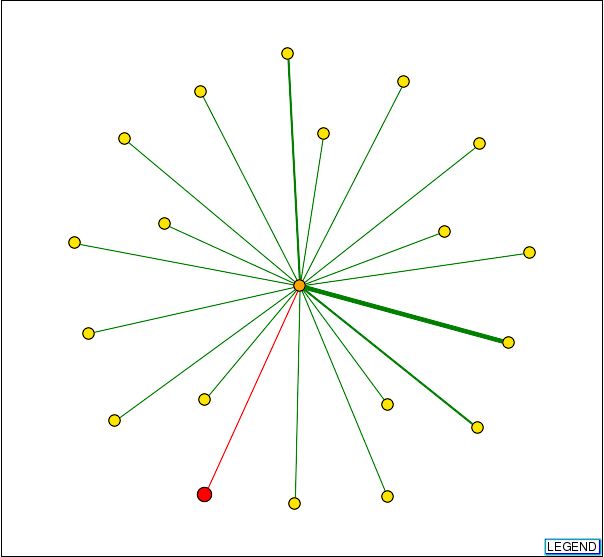
Figure 2: The start node, MRS2 is shown in red. MRS2 connects to a neighbor SRB4 which, is shown in orange. To explore this figure further link to DIP node graph. Permission Pending.
This database further cements previous information on MRS2.
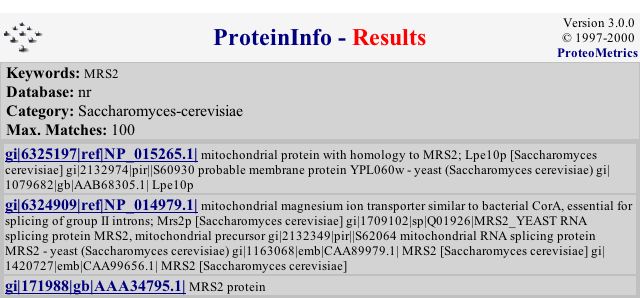
Figure 3: This figure gives information about the MRS2 gene encoded protein. Info from PROWL.
PROWL also gave the molecular mass and isolelectric point for the MRS2 protein.
Molecular mass: 47052.990 Da, pI: 8.9
This web site returned no hits for either MRS2 or YOR334W.
WIT What is There? Web Site
This page gives further information on the protein encoded by MRS2.

Figure 4: More protein information on MRS2. Notice a diffferent value for Molecular Weight on this site. Info from WIT.
The What is There site also shows similarities between proteins based on their sequences.
 Figure
5: This figure shows similarity of proteins based on their sequences. From
WIT.
Figure
5: This figure shows similarity of proteins based on their sequences. From
WIT.
This site gave more basic information about MRS2 but it also helped me link to another very helpful site called Yeast Microarray Global Viewer (YMGV for MRS2). From the YMGV site, I linked to other sites about MRS2.
One particularly useful site that listed interactions between MRS2 and other proteins was Yeast Grid.
This site gave information on interactions between other proteins and MRS2.
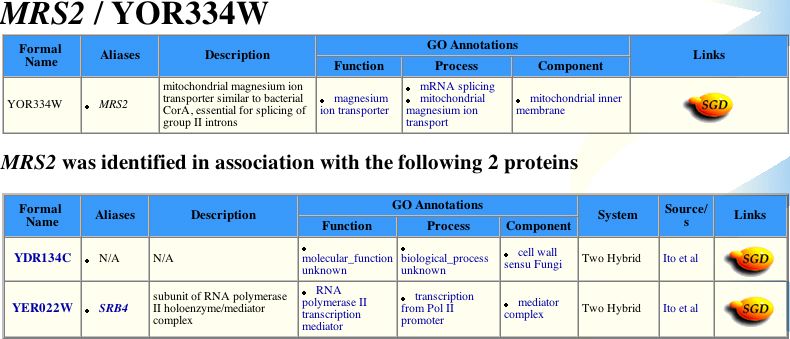
Figure 6: This figure shows interactions between two other proteins and MRS2. Info from Yeast Grid.
YOR338W
Gave basic gene expression data
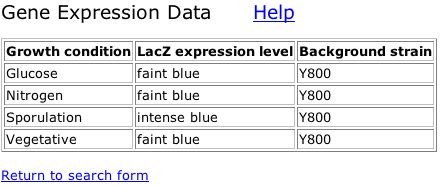
Figure 7: This is basic gene expression information for YOR338W but no data
on proteins.
Linked to Gene
Census
This site gave information on predicted cellular location in the nucleus
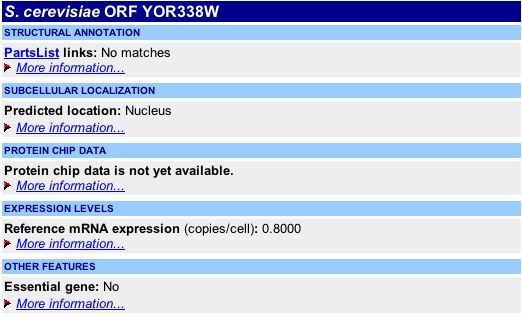
Figure 8: This figure shows very little information. However, the important part of this site is that is it gives a predicted location for the gene product. The predicted location is the nucleus.
PDB and Y2H
Results
Gave no hits for this non-annotated gene.
DIP
This site gave a very limited map of protein-protein interactions.

Figure 9: This figure shows the interaction between YOR338W and a bromodomain protein. Data from DIP.
The possibility that an interaction between the hypothetical
protein and a bromodomain protein could be interpreted that a circuit might
exist between the YOR338W protein and this bromodomain protein.
PROWL
This page gave some good information about the protein that could be used
to predict the location of a possible protein in a 2D gel using the molecular
mass and isoelectric point.
Molecular mass: 42083.075 Da, pI: 9.9 Data from PROWL.
But PROWL also gave very little info about the what the actual encoded protein for YOR338W could be saying the the protein, like the ORF was hypothetical.
Swiss-2D
page
This link gave no hits for YOR338W.
WIT
No hits for YOR338W for this link.
MIPS
This link provided the best information for YOR338W. One of the most useful
parts of this page was that it predicted that YOR338W was most similar to
YAL034c, another protein. When I checked on SGD this protein turned out to
be another hypothetical protein, however, this still helped me find more information
on YOR338W.
http://mips.gsf.de/genre/proj/yeast/searchEntryAction.do?text=YOR338w
From the MIPS site, I linked to Yeast Microarray Global Viewer.
YMGV
for YOR338W
This site contained more links for information about YOR338W. After going
through most of the links I noticed a link to Yeast Grid which gave some more
information on YOR338W.
Yeast
Grid
 Figure 10:
This figure shows that YOR338W was associated with YLR339C, a transcription
regulator. Not only is a transcription regulator an important protein, but
this protein is also located in the nucleus, which is where Gene Census predicted
that YOR338W was located.
Figure 10:
This figure shows that YOR338W was associated with YLR339C, a transcription
regulator. Not only is a transcription regulator an important protein, but
this protein is also located in the nucleus, which is where Gene Census predicted
that YOR338W was located.
Experiments
I would propose first to mine more databases to find basic information about this non-annotated gene before designing an experiment. However, one part of this assignment is to design an experiment to test a hypothesis about the proteins cellular location and function. Because I know so little about this non-annotated gene, I would first use an experiment to find out the cellular location of this protein. I would find the sequence for this protein and use some type of marker, radioactive or flourescent to bind to the translated protein to discover the cellular location of this hypothetical protein.
From this point on, I could design other experiments to find out timing and amount of protein. For instance, at what point is this gene induced to make this protein or when is this gene repressed to keep it from making this protein. Using experiments like Chait's method, I could determine the quantity of protein in a cell.
Finding out the 3D structure of YOR338W's protein would be a huge step in understanding its function. Once the 3D structure is determined, the general rule that shape determines function could be used to mine further data about this protein.
While working on this web assignment, one other possibility occurred to me that YOR338W does not encode a protein at all. If this were the case then further experimentation and investigation of this coding region of the genome would show evidence proving or disproving this hypothesis.
The most important part of experimentation would be to first gather more information about YOR338W before proceeding any further.
Email with Questions or Comments